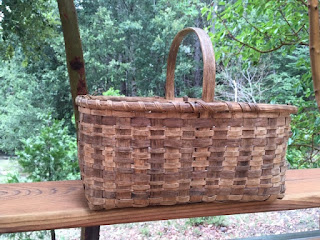When I was pregnant with my son, Ela, his dad and I joined our friends Hap and Barbee to live in a small cabin on the Cherokee Indian Reservation in the Smoky Mountains. (See the April 11 post for more tales about life on the Cherokee Reservation.)
 |
| Barbee |
The cabin sat in lush greenery on the side of Noble Mountain, miles from any neighbors and without electricity or a telephone. The cabin's owners, who, like all the other Indians on the reservation, had long ago moved to the valley, were glad to see the family cabin lived in again. It was an especially nice arrangement for the four of us because Barbee was pregnant, too, and due about the same time I was.
While Dan and Hap worked on the cabin and talked about the state of the world, Barbee and I did our Lamaze exercises on the cabin floor together, learning to breathe with the expected labor pains, fluttering our fingers in effleurage over our rounded bellies. We shared our pregnancy experiences, whispered secrets of the womb, talked about babies, diets, breast feeding. We would both have natural childbirth, but whereas Hap and Barbee opted to have their baby in the hospital in Knoxville, Dan and I would have ours there in the cabin. Dan would deliver.
When the time came for Hap and Barbee to leave, I stood at the cabin door watching him help her across the yard to their car. Barbee turned around to wave to me, smiling over her pregnant belly. I waved back, smiling over mine. The world would be different when we met again.
Dan and I stayed at the cabin and waited. I worked in the garden. I hiked up Noble Mountain. Dan made a baby bed. We weren't afraid to have a baby so far away from help. I was strong and healthy. We had read a lot of books.
Ela was born on the morning of April 20, spurting into the world with wide-open, excited eyes. As soon as Dan felt he could leave, he drove into the valley to call Hap and Barbee, and when he reached Hap, Hap told him that Barbee was in labor. Their baby was born later that same day.
A few weeks after the babies were born, Hap, Barbee, and their daughter, Apple, came home to the cabin. When I heard their car pulling into the driveway, I ran to the door of the cabin with my baby in my arms. Barbee was walking towards me with her baby in her arms. We met on the doorstep, and in our hug was the world of difference we had anticipated when we last parted.
We lived together in that cabin for another couple of months, nursing our babies, learning to be mothers, strengthening the already close bond between us. That bond never weakened in the years since our life together in the cabin, even though Barbee and Hap remained in Tennessee, while Dan and I moved to Oregon.
 |
| At the cabin, about 20 years later. Barbee and Hap on the extreme left; Apple and Ela on the right. I am in the center. |
Barbee Heilman was one of the most beautiful spirits in my life. She died this past Easter Sunday, the day after the birthday of our "twin" children. She didn't die after "a long battle with cancer" but after a short, intense battle with cancer, during which she was the same smiling, gracious, beautiful person she always had been. She was Buddhist and more than anyone I know, exhibited the principles of Buddhism, as much in her dying as in her living. She was a sister of my soul. I am going to miss her more than I can say.
 |
| Hap and Barbee, about a week before she died. |


